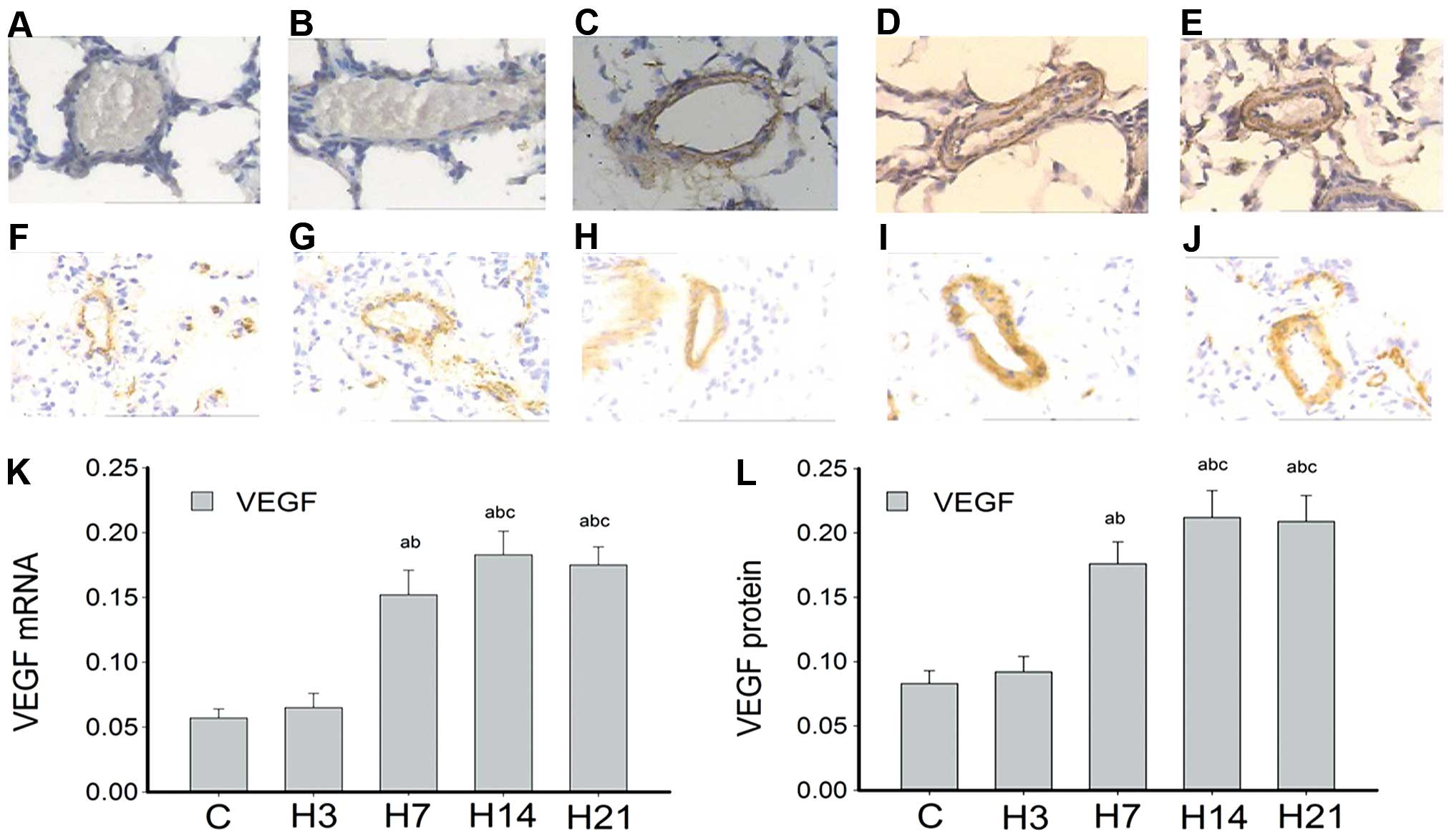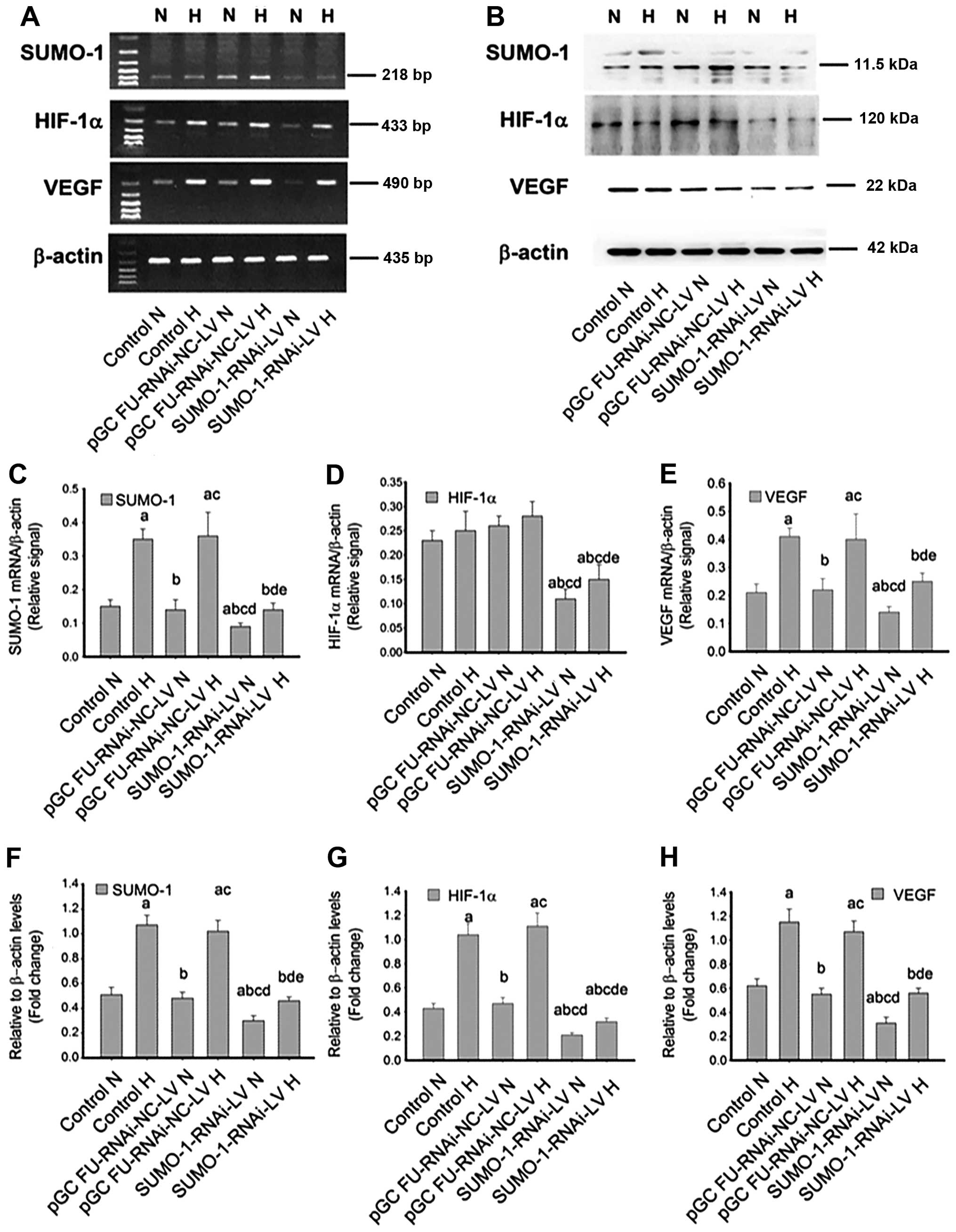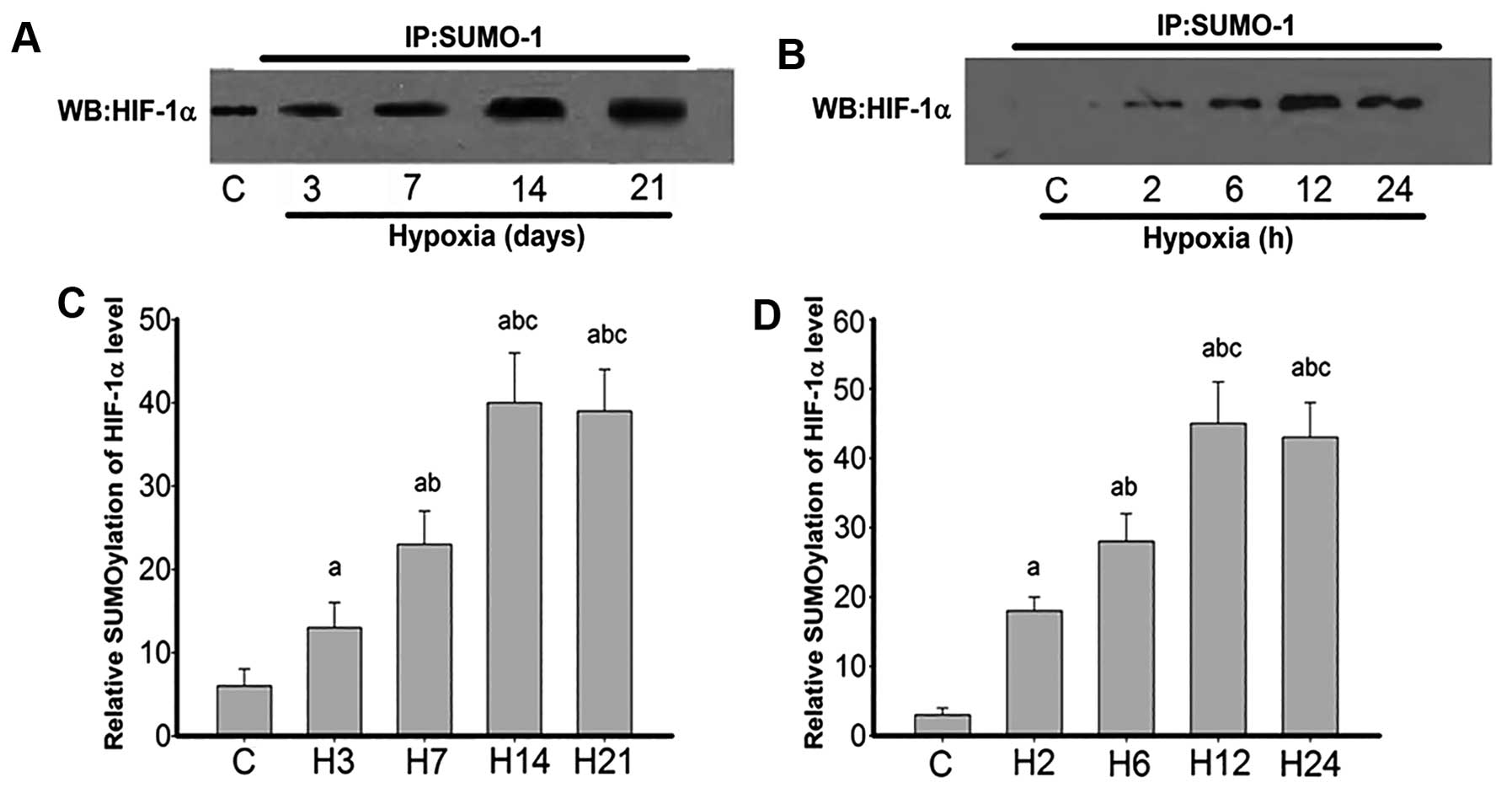|
1
|
Chatila WM, Thomashow BM, Minai OA, Criner
GJ and Make BJ: Comorbidities in chronic obstructive pulmonary
disease. Proc Am Thorac Soc. 5:549–555. 2008. View Article : Google Scholar : PubMed/NCBI
|
|
2
|
Chaouat A, Naeije R and Weitzenblum E:
Pulmonary hypertension in COPD. Eur Respir J. 32:1371–1385. 2008.
View Article : Google Scholar : PubMed/NCBI
|
|
3
|
Scharf SM, Iqbal M, Keller C, et al:
Hemodynamic characterization of patients with severe emphysema. Am
J Respir Crit Care Med. 166:314–322. 2002. View Article : Google Scholar : PubMed/NCBI
|
|
4
|
Kosanovic D, Dahal BK, Peters DM, Seimetz
M, Wygrecka M, Hoffmann K, Antel J, Reiss I, Ghofrani HA, Weissmann
N, Grimminger F, Seeger W and Schermuly RT: Histological
characterization of mast cell chymase in patients with pulmonary
hypertension andchronic obstructive pulmonary disease. Pulm Circ.
4:128–136. 2014. View
Article : Google Scholar : PubMed/NCBI
|
|
5
|
Ulasli SS, Eyuboglu FO, Verdi H and Atac
FB: Associations between endothelial nitric oxide synthase A/B,
angiotensin converting enzyme I/D and serotonin transporter L/S
gene polymorphisms with pulmonary hypertension in COPD patients.
Mol Biol Rep. 40:5625–5633. 2013. View Article : Google Scholar : PubMed/NCBI
|
|
6
|
Wright JL, Petty T and Thurlbeck WM:
Analysis of the structure of the muscular pulmonary arteries in
patients with pulmonary hypertension and COPD: National Institutes
of Health nocturnal oxygen therapy trial. Lung. 170:109–124. 1992.
View Article : Google Scholar : PubMed/NCBI
|
|
7
|
Shimoda LA and Semenza GL: HIF and the
lung: Role of hypoxia-inducible factors in pulmonary development
and disease. Am J Respir Crit Care Med. 183:152–156. 2011.
View Article : Google Scholar : PubMed/NCBI
|
|
8
|
Wang GL, Jiang BH, Rue EA and Semenza GL:
Hypoxia-inducible factor 1 is a basic-helix-loop-helix-PAS
heterodimer regulated by cellular O2 tension. Proc Natl
Acad Sci USA. 92:5510–5514. 1995. View Article : Google Scholar
|
|
9
|
Wang GL and Semenza GL: Purification and
characterization of hypoxia-inducible factor 1. J Biol Chem.
270:1230–1237. 1995. View Article : Google Scholar : PubMed/NCBI
|
|
10
|
Jaakkola P, Mole DR, Tian YM, et al:
Targeting of HIF-alpha to the von Hippel-Lindau ubiquitylation
complex by O2-regulated prolyl hydroxylation. Science.
292:468–472. 2001. View Article : Google Scholar : PubMed/NCBI
|
|
11
|
Ivan M, Kondo K, Yang H, et al: HIFalpha
targeted for VHL-mediated destruction by proline hydroxylation:
Implications for O2 sensing. Science. 292:464–468. 2001.
View Article : Google Scholar : PubMed/NCBI
|
|
12
|
Li QF and Dai AG: Hypoxia -inducible
factor-1 alpha regulates the role of vascular endothelial growth
factor on pulmonary arteries of rats with hypoxia-induced pulmonary
hypertension. Chin Med J (Engl). 117:1023–1028. 2004.
|
|
13
|
Li QF and Dai AG: Hypoxia inducible
factor-1 alpha correlates the expression of heme oxygenase 1 gene
in pulmonary arteries of rat with hypoxia-induced pulmonary
hypertension. Acta Biochim Biophys Sin (Shanghai). 36:133–140.
2004. View Article : Google Scholar
|
|
14
|
Jiang Y, Dai A, Li Q and Hu R: Hypoxia
induces transforming growth factor-beta1 gene expression in the
pulmonary artery of rats via hypoxia-inducible factor-1alpha. Acta
Biochim Biophys Sin (Shanghai). 39:73–80. 2007. View Article : Google Scholar
|
|
15
|
Hershko A and Ciechanover A: The ubiquitin
system. Annu Rev Biochem. 67:425–479. 1998. View Article : Google Scholar : PubMed/NCBI
|
|
16
|
Melchior F: SUMO - nonclassical ubiquitin.
Annu Rev Cell Dev Biol. 16:591–626. 2000. View Article : Google Scholar
|
|
17
|
Müller S, Hoege C, Pyrowolakis G and
Jentsch S: SUMO, ubiquitin’s mysterious cousin. Nat Rev Mol Cell
Biol. 2:202–210. 2001. View Article : Google Scholar
|
|
18
|
Hochstrasser M: SP-RING for SUMO: New
functions bloom for a ubiquitin-like protein. Cell. 107:5–8. 2001.
View Article : Google Scholar : PubMed/NCBI
|
|
19
|
Saitoh H, Pu RT and Dasso M: SUMO-1:
Wrestling with a new ubiquitin-related modifier. Trends Biochem
Sci. 22:374–376. 1997. View Article : Google Scholar : PubMed/NCBI
|
|
20
|
Su HL and Li SS: Molecular features of
human ubiquitin-like SUMO genes and their encoded proteins. Gene.
296:65–73. 2002. View Article : Google Scholar : PubMed/NCBI
|
|
21
|
Howe K, Williamson J, Boddy N, Sheer D,
Freemont P and Solomon E: The ubiquitin-homology gene PIC1:
Characterization of mouse (Pic1) and human (UBL1) genes and
pseudogenes. Genomics. 47:92–100. 1998. View Article : Google Scholar : PubMed/NCBI
|
|
22
|
Kamitani T, Kito K, Nguyen HP,
Fukuda-Kamitani T and Yeh ET: Characterization of a second member
of the sentrin family of ubiquitin-like proteins. J Biol Chem.
273:11349–11353. 1998. View Article : Google Scholar : PubMed/NCBI
|
|
23
|
Okura T, Gong L, Kamitani T, et al:
Protection against Fas/APO-1- and tumor necrosis factor-mediated
cell death by a novel protein, sentrin. J Immunol. 157:4277–4281.
1996.PubMed/NCBI
|
|
24
|
Shao R, Zhang FP, Rung E, Palvimo JJ,
Huhtaniemi I and Billig H: Inhibition of small ubiquitin-related
modifier-1 expression by luteinizing hormone receptor stimulation
is linked to induction of progesterone receptor during ovulation in
mouse granulosa cells. Endocrinology. 145:384–392. 2004. View Article : Google Scholar
|
|
25
|
Hochstrasser M: Ubiquitin-dependent
protein degradation. Annu Rev Genet. 30:405–439. 1996. View Article : Google Scholar : PubMed/NCBI
|
|
26
|
Desterro JM, Rodriguez MS and Hay RT:
SUMO-1 modification of IkappaBalpha inhibits NF-kappaB activation.
Mol Cell. 2:233–239. 1998. View Article : Google Scholar : PubMed/NCBI
|
|
27
|
Tojo M, Matsuzaki K, Minami T, et al: The
aryl hydrocarbon receptor nuclear transporter is modulated by the
SUMO-1 conjugation system. J Biol Chem. 277:46576–46585. 2002.
View Article : Google Scholar : PubMed/NCBI
|
|
28
|
Chan JY, Tsai CY, Wu CH, et al:
Sumoylation of hypoxia-inducible factor-1alpha ameliorates failure
of brain stem cardiovascular regulation in experimental brain
death. PLoS One. 6:e173752011. View Article : Google Scholar
|
|
29
|
Li X, Lu W, Fu X, et al: BMP4 increases
canonical transient receptor potential protein expression by
activating p38 MAPK and ERK1/2 signaling pathways in pulmonary
arterial smooth muscle cells. Am J Respir Cell Mol Biol.
49:212–220. 2013. View Article : Google Scholar : PubMed/NCBI
|
|
30
|
Wang J: Extraction and identification of
primary rat pulmonary artery smooth muscle cells and effects of
hypoxia on the proliferation. Chin J Respir Crit Care Med.
11:147–152. 2012.
|
|
31
|
Rosenberger C, Heyman SN, Rosen S, et al:
Up-regulation of HIF in experimental acute renal failure: Evidence
for a protective transcriptional response to hypoxia. Kidney Int.
67:531–542. 2005. View Article : Google Scholar : PubMed/NCBI
|
|
32
|
Wood SM, Gleadle JM, Pugh CW, Hankinson O
and Ratcliffe PJ: The role of the aryl hydrocarbon receptor nuclear
translocator (ARNT) in hypoxic induction of gene expression.
Studies in ARNT-deficient cells. J Biol Chem. 271:15117–15123.
1996. View Article : Google Scholar : PubMed/NCBI
|
|
33
|
Ema M, Hirota K, Mimura J, et al:
Molecular mechanisms of transcription activation by HLF and
HIF1alpha in response to hypoxia: Their stabilization and redox
signal-induced interaction with CBP/p300. EMBO J. 18:1905–1914.
1999. View Article : Google Scholar : PubMed/NCBI
|
|
34
|
Martinez-Sanchez G and Giuliani A:
Cellular redox status regulates hypoxia inducible factor-1
activity. Role in tumour development. J Exp Clin Cancer Res.
26:39–50. 2007.PubMed/NCBI
|
|
35
|
Yee Koh M, Spivak-Kroizman TR and Powis G:
HIF-1 regulation: Not so easy come, easy go. Trends Biochem Sci.
33:526–534. 2008. View Article : Google Scholar : PubMed/NCBI
|
|
36
|
Mahajan R, Delphin C, Guan T, Gerace L and
Melchior F: A small ubiquitin-related polypeptide involved in
targeting RanGAP1 to nuclear pore complex protein RanBP2. Cell.
88:97–107. 1997. View Article : Google Scholar : PubMed/NCBI
|
|
37
|
Matunis MJ, Coutavas E and Blobel G: A
novel ubiquitin-like modification modulates the partitioning of the
Ran-GTPase-activating protein RanGAP1 between the cytosol and the
nuclear pore complex. J Cell Biol. 135:1457–1470. 1996. View Article : Google Scholar : PubMed/NCBI
|
|
38
|
Hay RT: SUMO: A history of modification.
Mol Cell. 18:1–12. 2005. View Article : Google Scholar : PubMed/NCBI
|
|
39
|
Shao R, Zhang FP, Tian F, et al: Increase
of SUMO-1 expression in response to hypoxia: Direct interaction
with HIF-1alpha in adult mouse brain and heart in vivo. FEBS Lett.
569:293–300. 2004. View Article : Google Scholar : PubMed/NCBI
|
|
40
|
Mossessova E and Lima CD: Ulp1-SUMO
crystal structure and genetic analysis reveal conserved
interactions and a regulatory element essential for cell growth in
yeast. Mol Cell. 5:865–876. 2000. View Article : Google Scholar : PubMed/NCBI
|
|
41
|
Yang W, Sheng H, Homi HM, Warner DS and
Paschen W: Cerebral ischemia/stroke and small ubiquitin-like
modifier (SUMO) conjugation - a new target for therapeutic
intervention? J Neurochem. 106:989–999. 2008. View Article : Google Scholar : PubMed/NCBI
|
|
42
|
Cheng J, Bawa T, Lee P, Gong L and Yeh ET:
Role of desumoylation in the development of prostate cancer.
Neoplasia. 8:667–676. 2006. View Article : Google Scholar : PubMed/NCBI
|
|
43
|
Berta MA, Mazure N, Hattab M, Pouyssegur J
and Brahimi-Horn MC: SUMOylation of hypoxia-inducible factor-1alpha
reduces its transcriptional activity. Biochem Biophys Res Commun.
360:646–652. 2007. View Article : Google Scholar : PubMed/NCBI
|
|
44
|
Cheng J, Kang X, Zhang S and Yeh ET:
SUMO-specific protease 1 is essential for stabilization of
HIF1alpha during hypoxia. Cell. 131:584–595. 2007. View Article : Google Scholar : PubMed/NCBI
|
|
45
|
Bae SH, Jeong JW, Park JA, et al:
Sumoylation increases HIF-1alpha stability and its transcriptional
activity. Biochem Biophys Res Commun. 324:394–400. 2004. View Article : Google Scholar : PubMed/NCBI
|
|
46
|
Semenza GL: Expression of
hypoxia-inducible factor 1: Mechanisms and consequences. Biochem
Pharmacol. 59:47–53. 2000. View Article : Google Scholar
|
|
47
|
Semenza GL: HIF-1: Mediator of
physiological and pathophysiological responses to hypoxia. J Appl
Physiol (1985). 88:1474–1480. 2000.
|
|
48
|
Semenza GL, Agani F, Feldser D, et al:
Hypoxia, HIF-1, and the pathophysiology of common human diseases.
Adv Exp Med Biol. 475:123–130. 2000. View Article : Google Scholar : PubMed/NCBI
|
|
49
|
Ravi R, Mookerjee B, Bhujwalla ZM, et al:
Regulation of tumor angiogenesis by p53-induced degradation of
hypoxia-inducible factor 1alpha. Genes Dev. 14:34–44.
2000.PubMed/NCBI
|
|
50
|
Hudson CC, Liu M, Chiang GG, et al:
Regulation of hypoxia-inducible factor 1alpha expression and
function by the mammalian target of rapamycin. Mol Cell Biol.
22:7004–7014. 2002. View Article : Google Scholar : PubMed/NCBI
|
|
51
|
Jin WS, Kong ZL, Shen ZF, Jin YZ, Zhang WK
and Chen GF: Regulation of hypoxia inducible factor-1alpha
expression by the alteration of redox status in HepG2 cells. J Exp
Clin Cancer Res. 30:612011. View Article : Google Scholar
|
|
52
|
Blouin CC, Page EL, Soucy GM and Richard
DE: Hypoxic gene activation by lipopolysaccharide in macrophages:
implication of hypoxia-inducible factor 1alpha. Blood.
103:1124–1130. 2004. View Article : Google Scholar
|
















